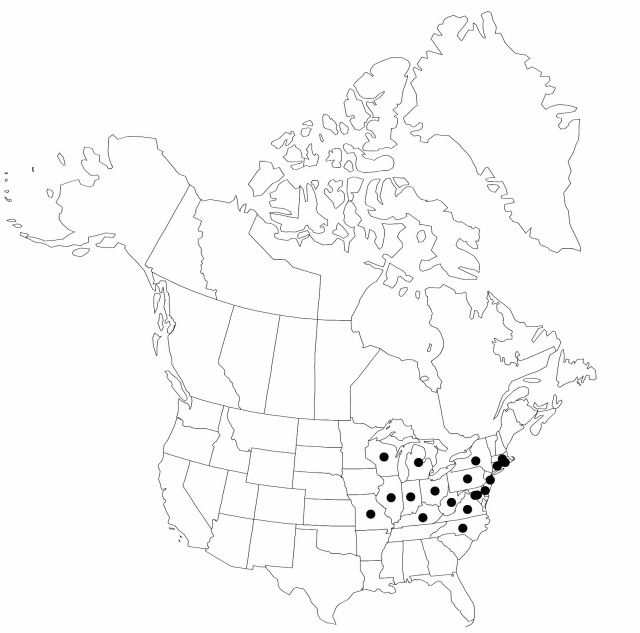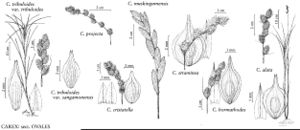Difference between revisions of "Carex straminea"
in C. Schkuhr, Beschr. Riedgräs. 1: 49, plate G, fig. 34. 1801.
FNA>Volume Importer |
FNA>Volume Importer |
(No difference)
| |
Revision as of 19:09, 24 September 2019
Plants densely cespitose. Culms 35–100 cm. Leaves: sheaths adaxially green-veined nearly to collar, narrow hyaline band or sharp Y-shaped region at collar, adaxially firm, summits U-shaped; distal ligules 1.5–4.5 mm; blades 3–4 per fertile culm, 15–30 cm × 1.5–3 mm. Inflorescences nodding, open, yellow-brown to reddish brown, 3.5–8 cm × 5–14 mm; proximal internode 5–18 mm; 2d internode 5–17 mm; proximal bracts scalelike with bristle tips shorter than inflorescences. Spikes 3–7, distant, distinct, globose, (6–)9–14 × 6–9 mm, base usually attenuate, apex rounded; lateral spikes with staminate portion 2–6 mm at base. Pistillate scales reddish brown, with green or pale midstripe, lanceolate, 2.5–3 mm, shorter or longer and narrower than perigynia, margin reddish brown, apex firm, acuminate or awned to 0.8 mm. Staminate scales with reddish brown margins. Perigynia widely spreading, reddish brown, conspicuously 5-veined or more on each face, ± orbiculate, flat except over achene, 4–5.6 × 1.8–2.8 mm, 0.4–0.5 mm thick, base rounded, margin flat, including wing 0.6–0.9 mm wide; beak widely spreading, pale to reddish brown at tip, flat, ciliate-serrulate, abaxial suture with golden brown margin, distance from beak tip to achene 2–3 mm. Achenes elliptic, 1.5–1.8 × 0.8–1 mm, 0.3–0.4 mm thick. 2n = 74.
Phenology: Fruiting early summer.
Habitat: Freshwater marshes, shores, and swales, wet woods, in sandy or peaty, acidic soils
Elevation: 0–400 m
Distribution

Conn., Del., D.C., Ill., Ind., Ky., Md., Mass., Mich., Mo., N.J., N.Y., N.C., Ohio, Pa., R.I., Va., W.Va., Wis.
Discussion
The distribution of Carex straminea is discontinuous: scattered occurrences or clusters of occurrences are widely separated from each other.
Selected References
None.
